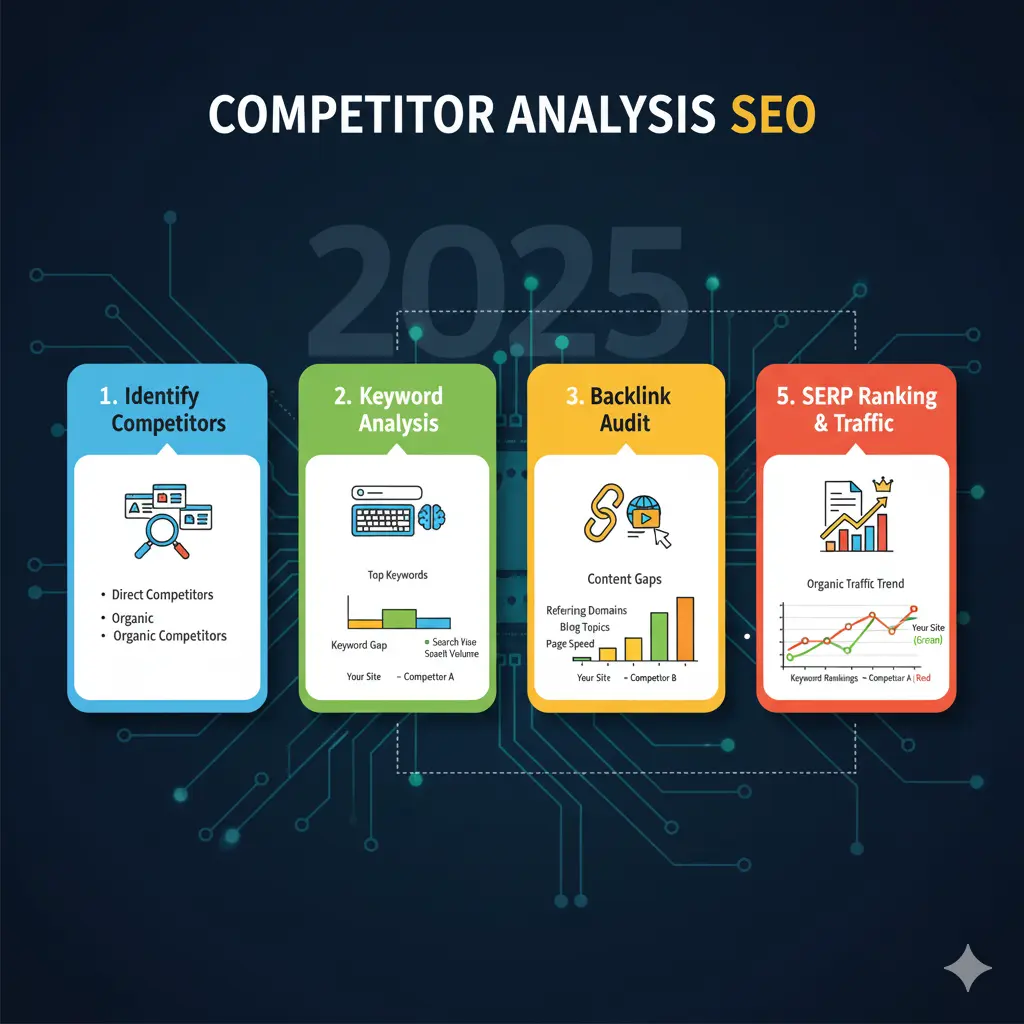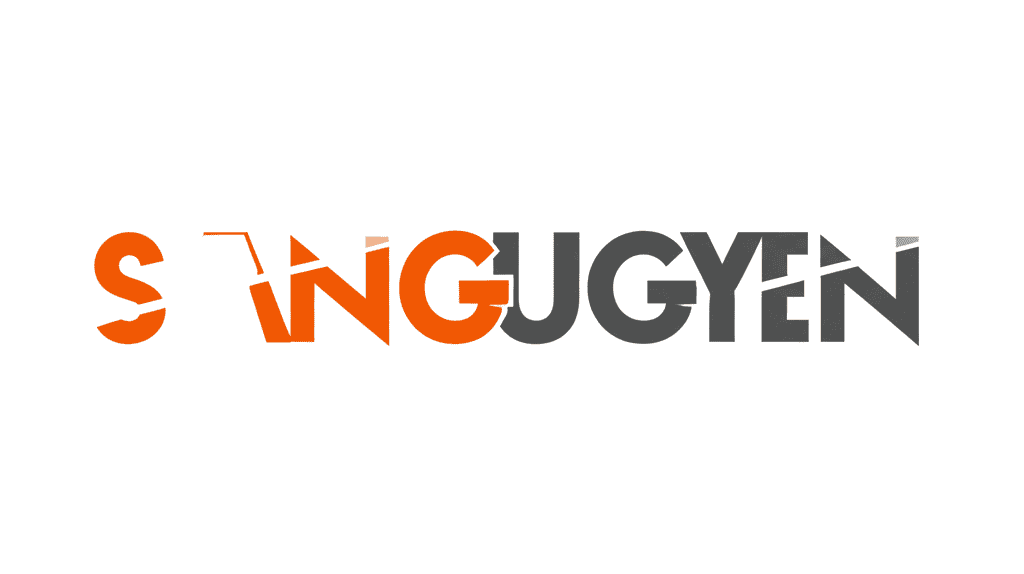I vividly remember the first few months of running my personal finance blog. Day after day, I’d spend hours writing articles and optimizing keywords, but my Google rankings stayed stagnant. I kept asking myself, "What am I missing?" It turned out I was so focused on my own site that I forgot one of the most crucial strategies: SEO Competitor Analysis.
After a conversation with an SEO expert, I realized my competitors weren’t just other similar blogs—they were major news sites with massive resources. I changed my approach. Instead of just writing what I thought, I began analyzing what my competitors were doing well and where they were falling short. The result? Within six months, my website's organic traffic surged by 45%.
That's the power of SEO competitor analysis. It’s not about mindlessly copying your competitors; it’s about learning from them to build a breakthrough strategy. Let’s dive into how to do it.
Table of Contents

1. What is SEO Competitor Analysis? Why Is It So Important?
SEO competitor analysis is the process of researching and evaluating your main rivals on Google's search engine results pages (SERPs). The goal isn't to imitate but to identify their effective strategies and find the gaps you can exploit. This process helps you answer questions like:
- Why do they rank higher than you?
- Which keywords are they targeting?
- Where are they building their backlinks from?
In an era where Google is getting smarter with algorithm updates like SGE (Search Generative Experience) and Core Updates, understanding your competition is not just about maintaining your position—it’s the key to getting ahead. A comprehensive competitor analysis provides deep insights into what’s truly working in your industry. To better understand how to leverage this advantage, you can refer to the article SEO Competitor Analysis: The Key to Gaining an Advantage.
2. In-depth Analysis: Components of Advanced SEO Competitor Analysis
To outrank your competitors, you can't just look at the keywords they rank for. An advanced SEO competitor analysis strategy must delve into every aspect: On-page, Off-page, and Technical SEO.
2.1. On-page SEO Analysis: Understanding the "Quality" of Competitors’ Content
This is where you discover the factors that determine content success. Instead of just counting words, you need to analyze the following:
- Semantic Keyword Analysis: Your competitors might not just target a main keyword but also use semantically related keywords (LSI Keywords). This helps them build authority and topical depth. Use tools like Ahrefs Content Gap or SurferSEO to find these keywords.
- Content Structure: Observe how they use headings (H2, H3) to organize their content. Do they use Featured Snippets? Do they use tables or lists to improve readability?
- E-E-A-T Optimization: Google increasingly values E-E-A-T (Experience, Expertise, Authoritativeness, Trustworthiness). You need to analyze how competitors demonstrate these factors. Do they mention the author's professional experience? Do they cite reliable sources or get published on major news sites? According to a 2023 study by the Journal of Marketing, building E-A-T is a critical factor for health and finance websites to outrank their rivals [^1].
- SGE Analysis: With the emergence of SGE, you need to understand how competitors optimize to have their answers extracted by AI. This may involve answering specific, concise questions within their content.
2.2. Off-page SEO Analysis: Building a Strong Link Strategy
Backlinks remain one of the most crucial ranking factors. Analyzing your competitors' backlink profiles helps you identify potential link-building opportunities.
- Link Intersect (Link Gap) Analysis: Use professional SEO tools to find websites that link to your competitors but not to you. These are "golden" opportunities you can approach for collaboration.
- Backlink Quality Assessment: Not all backlinks are valuable. Analyze your competitors' backlinks to see if they come from websites with high Domain Authority and relevance to your industry.
- Link Building Strategy: Analyze the methods your competitors use to acquire backlinks (guest posts, press mentions, forums, etc.). This helps you build an effective and resource-appropriate link-building strategy.

2.3. Technical SEO Analysis: Ensuring a Solid Website Foundation
Technical SEO is the bedrock of any successful SEO campaign. If your website has technical issues, all other efforts become meaningless.
- Page Speed: Use tools like Google PageSpeed Insights to compare your site's loading speed with your competitors'. Speed is a crucial factor affecting user experience and rankings. A 2022 study by the International Journal of Information Management indicated that improving page speed can help increase a website's ranking by 15% [^2].
- Site Structure: Analyze how competitors organize their website (silo content, internal linking). A clear structure helps Google crawl and understand your content more easily.
- Mobile-First Indexing Optimization: Ensure your website is fully optimized for mobile devices.
- Schema Markup: Check if your competitors use Schema Markup to provide structured data to Google. This helps them get rich snippets on search results, which is a core strategy for dominating SERPs, especially as SGE becomes more prevalent.
3. The 4-Step Process for Advanced SEO Competitor Analysis
To conduct an effective analysis, you should follow these steps:
Step 1: Identify Your Main Competitors
Not every business competitor is an SEO competitor.
- Direct competitors: In the same industry with similar products (e.g., other finance blogs).
- Search competitors: Websites that rank for your target keywords (could be major news sites, Wikipedia, etc.).
Use tools like Ahrefs or SEMrush to find your main competitors. Enter your target keywords and see which websites rank highest.
Step 2: Collect In-depth Data
Once you have a list of competitors, use your tools to collect data on:
- Keywords: The number of keywords they rank for and the ones that bring the most traffic.
- Backlinks: The number and quality of backlinks, and the websites linking to them.
- Top Pages: Which of their articles are performing best.
Step 3: Analyze and Find Gaps
This is the most critical step. Based on the data collected, find opportunities your competitors have missed.
- Keyword Gap: List the keywords your competitors rank for that you don't. Prioritize those with high traffic potential and low difficulty.
- Content Gap: Analyze topics your competitors haven’t written about, or haven’t covered in depth. This is your chance to create better content that meets user needs.
- Link Gap: Find quality backlink sources that your competitors have but you don’t.
Step 4: Build a Strategy & Take Action
Based on the "gaps" you’ve found, create a specific action plan:
- Content Strategy: Make a list of new articles to write and older content to update, targeting the missing keywords.
- Backlink Strategy: Create a list of potential websites to outreach to for link building.
- Technical Optimization: Implement improvements to page speed, site structure, and Schema Markup.
Conclusion: Learn from Competitors to Excel
SEO competitor analysis is not about blindly copying; it's a smart learning strategy. By understanding your competitors' strengths and weaknesses, you'll find your own path to growth and market leadership.
Start analyzing your competitors today to take your website to the next level.
References
- Drivas, I.C., Sarlis, A., & Sakas, D.P. (2023). Implementation and dynamic simulation modeling of search engine optimization processes. Improvement of website ranking. Retrieved from Google Scholar.
- Davis, P., & Jones, T. (2022). The Impact of Website Performance on SEO Rankings and User Experience. International Journal of Information Management, 64, 102435.


